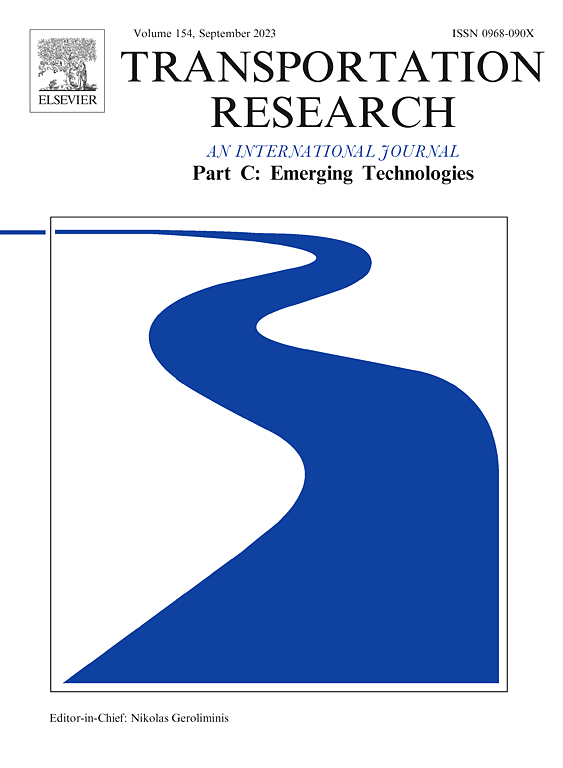An artificial potential field approach for virtual coupling train control with complete braking curve supervision
IF 7.6
1区 工程技术
Q1 TRANSPORTATION SCIENCE & TECHNOLOGY
Transportation Research Part C-Emerging Technologies
Pub Date : 2025-02-25
DOI:10.1016/j.trc.2025.105050
引用次数: 0
Abstract
In response to the escalating demand for rail transport, the concept of Virtual Coupling (VC) train operations is progressively gaining ground within the railway sector. The concept of VC aims at reducing safe train separation to less than the absolute braking distance by letting trains move synchronously in radio-connected convoys. One of the major concerns associated with VC is ensuring safe train separation considering realistic risk factors, such as heterogeneous train braking performances and varying track conditions. To address such a safe train separation problem under VC, this paper proposes a novel train control model based on the Artificial Potential Field (APF) method to safely supervise the complete braking process of trains moving in a VC convoy. The proposed model uses a homogeneous strip representation of train length and a Dynamic Safety Margin (DSM) to take into account accurate train dynamics as well as potential risk factors, due to different train acceleration/braking rates, communication delays, unexpected emergency train braking applications, and position measurement errors. The method has been applied to the case of a high-speed line in China. Results show that the APF-based control method can effectively adapt to real-time variations in train dynamics and the operational environment to safely supervise the complete train braking process and avoid collisions even in the case of unplanned emergency braking applications. The proposed APF-based approach shows promising real-time performance which can further contribute to advancing the state of the art on safe train control under VC signalling.
求助全文
约1分钟内获得全文
求助全文
来源期刊
CiteScore
15.80
自引率
12.00%
发文量
332
审稿时长
64 days
期刊介绍:
Transportation Research: Part C (TR_C) is dedicated to showcasing high-quality, scholarly research that delves into the development, applications, and implications of transportation systems and emerging technologies. Our focus lies not solely on individual technologies, but rather on their broader implications for the planning, design, operation, control, maintenance, and rehabilitation of transportation systems, services, and components. In essence, the intellectual core of the journal revolves around the transportation aspect rather than the technology itself. We actively encourage the integration of quantitative methods from diverse fields such as operations research, control systems, complex networks, computer science, and artificial intelligence. Join us in exploring the intersection of transportation systems and emerging technologies to drive innovation and progress in the field.

 求助内容:
求助内容: 应助结果提醒方式:
应助结果提醒方式:


